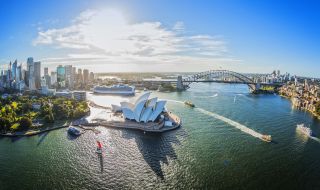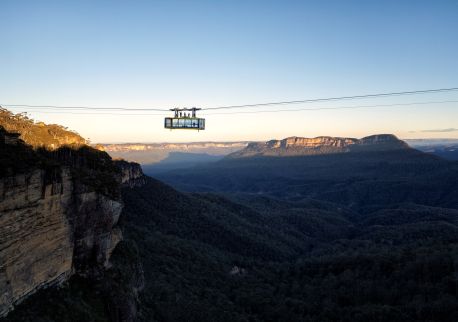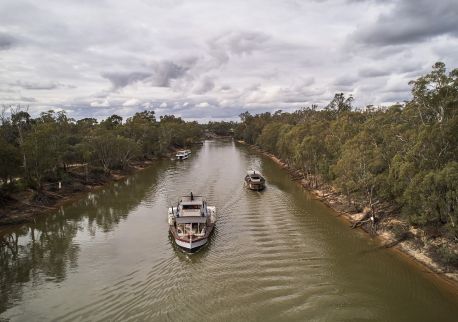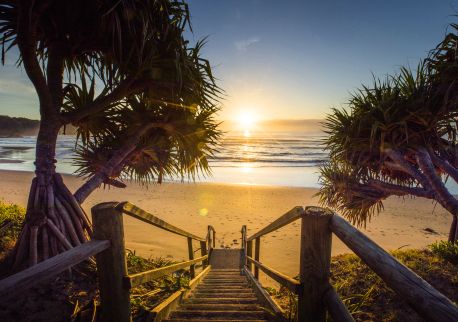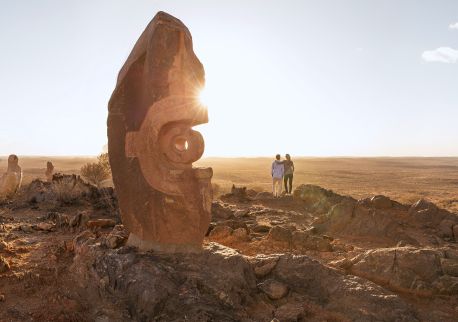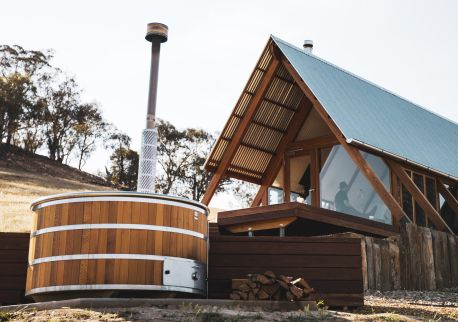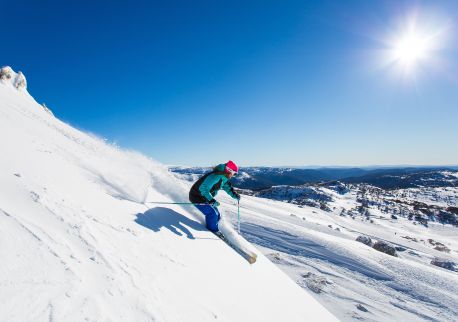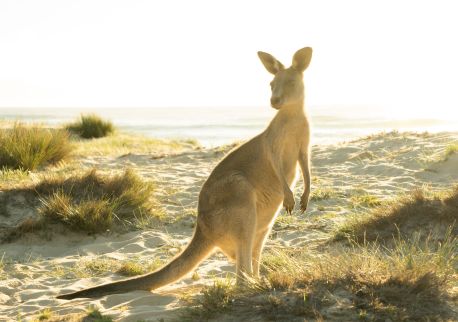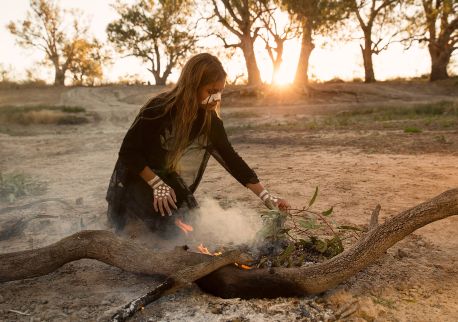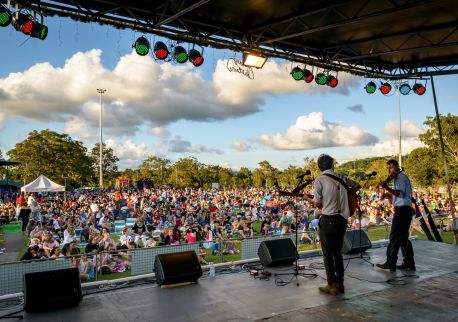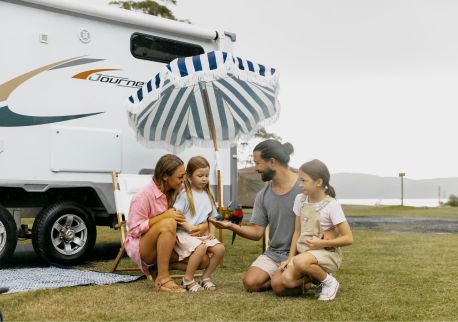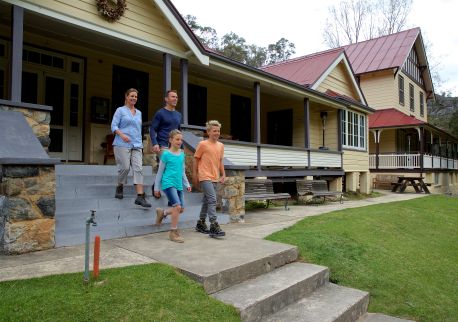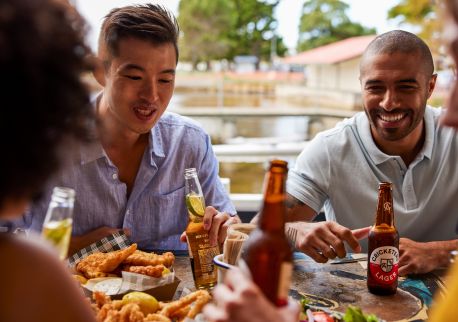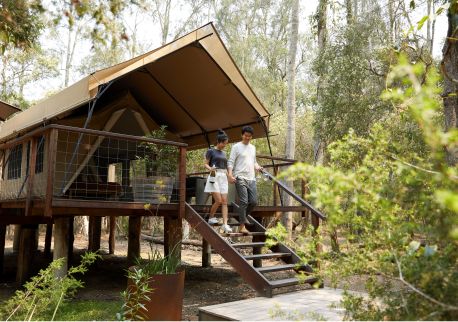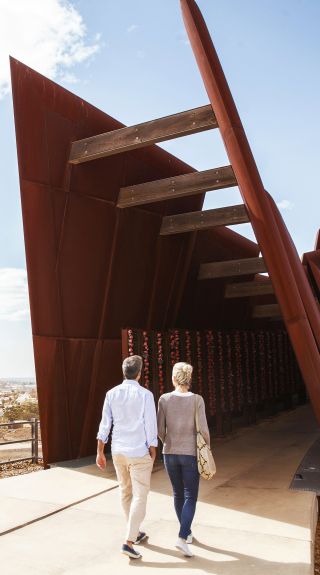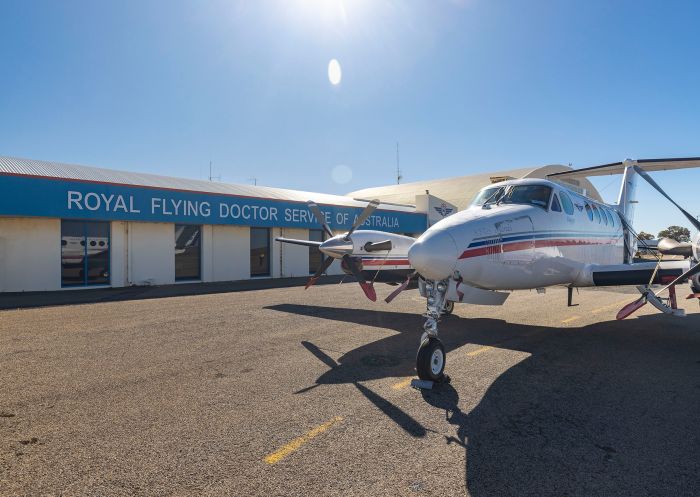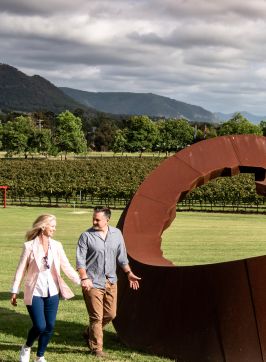You’ll feel a deep connection to the past when you explore Broken Hill’s history first-hand. Step into the shoes of a miner, learn the stories of the city’s migrants, understand the roots of the country’s union movement and more.

Destination NSW
- 3 min read
Join a historic walking tour
To get a sense of why Broken Hill was named Australia’s first heritage-listed city, slow down and take a stroll around town in the presence of an expert. On the two-hour Broken Hill Heritage Walk Tour, led by volunteer guides, history will be brought to vivid life as you visit some of the city’s most striking buildings. You’ll get a deeper understanding of the union movement at the magnificent 1905 Trades Hall, the first building in Australia to be owned by unions – Broken Hill was well known as the most militant town in the nation and played a pivotal role in the fight for miners’ rights.
As you wander the streets of the CBD (where many of the streets are named after metals and minerals), you’ll admire the red-brick Post Office, with its 26m-high clock tower; the Court House, with its lion-and-unicorn coat of arms; and pubs including the iconic Palace Hotel, which ironically began life as an alcohol-free coffee house, commissioned by the temperance movement in 1889.
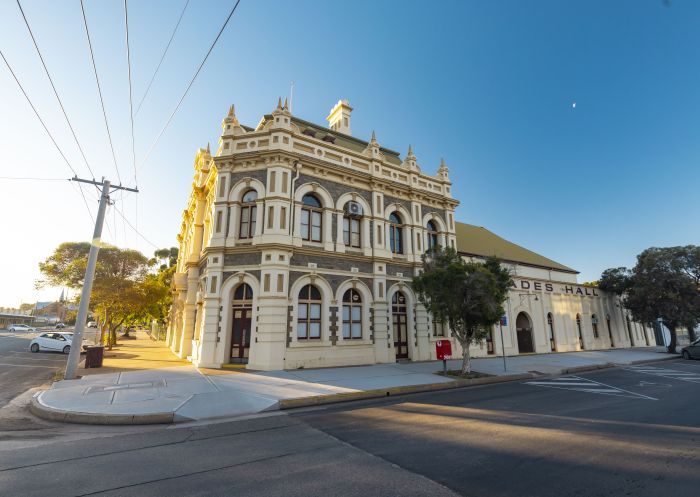
Trades Hall, Broken Hill
See Aboriginal rock art
If the spectacular landscape of Mutawintji National Park doesn't take your breath away, then the Mutawintji Historic Site surely will. Home to Aboriginal rock engravings and ochre stencils, you'll also see the remains of fireplaces, stone flakes and grinding stones. You can only visit this special park by taking a Mutawintji Cultural Tour that will illuminate the site's history and culture.

Mutawintji Historic Site, Mutawintji National Park
Explore mines
For a sense of what life was like for early miners in and around Broken Hill, head to the Historic Daydream Mine near Silverton, and descend beneath the earth to walk the same narrow, cold tunnels that Cornish silver miners did in the 1880s.

Historic Daydream Mine, Silverton
Standing in the low-ceilinged spaces, listening to tales spun by a knowledgeable guide, you’ll understand just how tough conditions were: the work, illuminated only by candles held in wall-gripping candle holders called ‘spiders’, involved tapping a hole in the rock with a hammer and chisel, putting a fuse and black powder in it to blast a bigger hole, then sending in the ‘pickey boys’ (14- and 15-year-olds, who would hand-pick the ore). Lung disease and failing eyesight were common. Mining has claimed more than 800 lives over the years at Broken Hill. The Line of Lode Miner's Memorial, overlooking the city, is a poignant and dramatic monument to all of them.
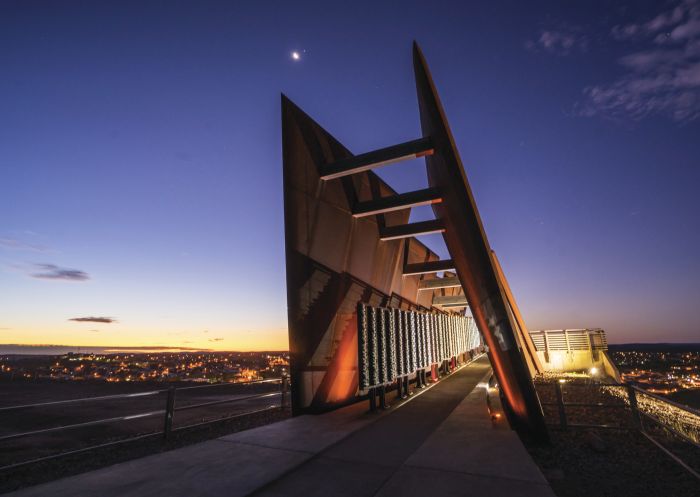
Line of Lode Miner's Memorial, Broken Hill
Discover the minerals that made Broken Hill
In 1883, the Barrier Ranges that surround the city were already thronging with fortune seekers – Silverton had a couple of hundred residents – when a boundary rider by the name of Charles Rasp pegged out a claim at the ‘Broken Hill’. It would turn out to be part of the Line of Lode: one of the world’s largest bodies of silver, lead and zinc. Soon, Rasp joined with six others – the Syndicate of Seven – to peg out the whole ridge, and two years later they formed the Broken Hill Proprietary Company, better known as BHP.
You can relive that fascinating story at the Albert Kersten Mining and Minerals Museum, also known as the Geocentre. On the Crystal Theatre’s three-screen cinema, go on a 10-minute immersive journey that explains the creation of the Universe, from the Big Bang to the present day, and learn how the Line of Lode was formed. Browse the world-class collection of mineral specimens, including a 42kg silver nugget found in Broken Hill, as well as a famous ornament, the silver tree, once owned by Rasp himself.
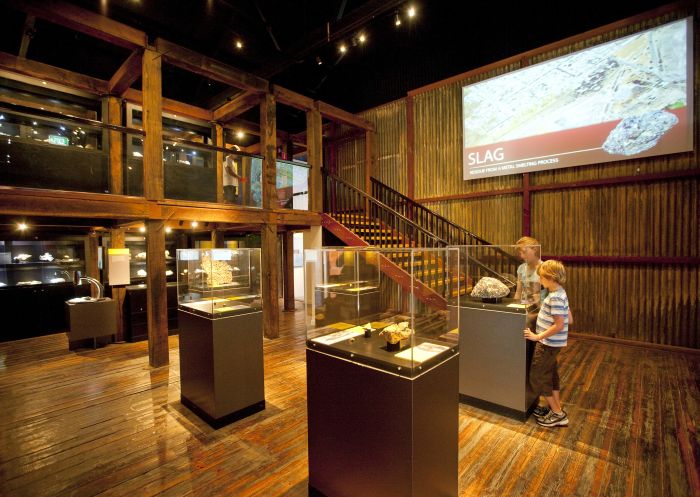
Albert Kersten Mining and Minerals Museum, Broken Hill - Credit: Broken Hill City Council
Visit museums showcasing trains, minerals, migrant communities and hospitals
From 1888, the Silverton Tramway system took ore from the mines to the border with South Australia (from where it would go on to Port Pirie). It was once one of the busiest stretches of railway in the world but ceased running in 1970. However, its history lives on at the Sulphide Street Railway & Historical Museum, housed in Broken Hill’s original 1905 station.
Take a trip back in transport time by hopping aboard old trains and discovering all sorts of fascinating memorabilia. It’s part of a complex that actually houses four museums, where you can find remarkable insights into the town’s past.
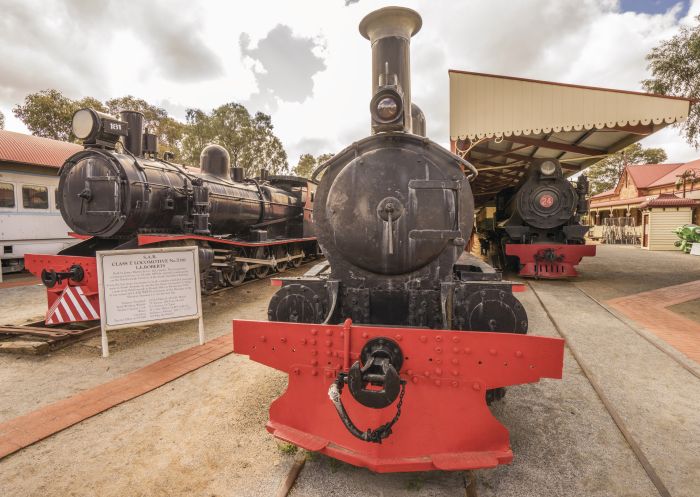
Sulphide Street Railway & Historical Museum, Broken Hill
As well as the railway museum, on site there’s the Broken Hill Migrant Museum celebrating the lives of 70 Broken Hill migrants from 11 nationalities, the Hospital Museum which will make you grateful for modern medical practices, the Ron Carter Transport Pavilion housing original vehicles including a horse-drawn ambulance, and a 1930s-1950s fun fair called Johns Brothers Joyland. The Tess Alfonsi Mineral Collection is also nearby.
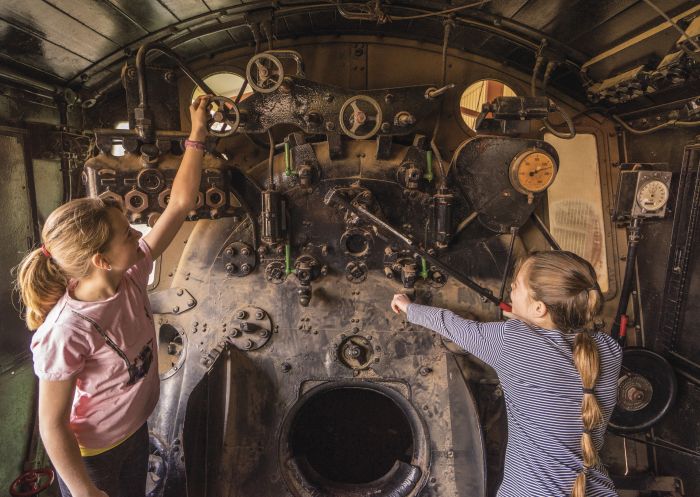
Sulphide Street Railway & Historical Museum, Broken Hill
Celebrate the Royal Flying Doctor Service
Step inside the Royal Flying Doctor Service (RFDS) Outback Heritage Experience for an inspiring journey through nearly a century of outback medical service. Set within a working RFDS base, the interactive exhibits, aircraft displays, and personal stories bring to life the ingenuity and dedication behind this iconic Australian service.
